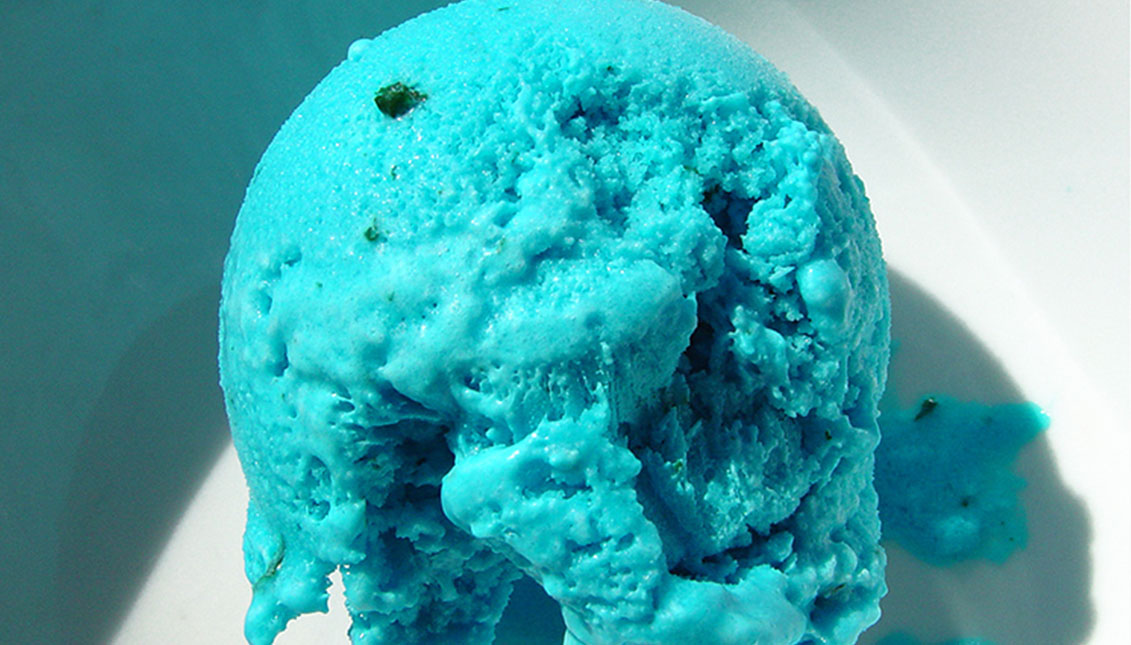
Edible Art: What if the Caribbean Sea were ice cream?
Prejudices have a bitter taste, but this ephemeral artwork fights against them with a scoop of salty, turquoise freshness.
I'm sure you've dipped into the sea and unwittingly swallowed a mouthful of salt water.
This is more or less the sensory experience presented by Cuban-Dominican artist Quisqueya Henríquez, who in 2002, invited the attendees of her exhibition to grab a spoon and dip it into an incredibly appetizing-looking turquoise ball that was like having the entire Caribbean Sea in your mouth. It went down salty as hell.
It happened in Chicago and New York, and also in the Dominican Republic, where young and old lined up in front of a refrigerator to taste something that in a few hours — more or less — was going to be little more than a memory.
Now the Malba in Buenos Aires is presenting a virtual exhibition as part of its program, History as a rumor of re-contextualization of Latin American art performances, and shows the exhibition as a way of criticizing the stereotypes and ambiguities surrounding the Antilles.
"Caribbean Sea Ice Cream" is part of the project titled Burlas (Mockery) that revolves around the idea of what is "icy" despite living in the tropics: the clothes, the blood, or in other words, the clichés that surround everything Caribbean.
"The temperature has to do with these geographical determination.
For example, if thinking is much more possible in cold climates, or how a subject behaves in warmer temperatures. There is the example of Abilio Estévez, a Cuban writer who migrated to Barcelona and every time he went to a party, he was asked to dance. He said he did not know how to dance and was a bit sad for having migrated, but in Spain they asked:
"A sad, depressed Cuban who does not know how to dance, how is that possible?" Henríquez told Clarín.
An ice-cream man, a gallery owner, and a female artist tired of having only drama around her could be a good premise for a comedy of entanglement, but it really happened to Quisqueya Henríquez. It happened upon her return to the Dominican Republic in early 2000, when it seemed the country was breathing new airs of political change, and she realized the promise was quite ephemeral and idealized.
RELATED CONTENT
"I considered going in reverse of my family background, which I call an environment of bitterness, and approach my practice from a humorous point of view. Because as participants in the political struggles I had already assimilated the failure of the left and of the changes in Latin America. I wanted to make fun of my own history," she said.
It turned out that her gallery owner's landlord in Miami, whom she had met in the late 1990s, moved to the Dominican Republic because his wife had inherited an ice cream company. The two coincided at an exhibition at the same time when she had the idea of doing the piece.
"I went straight to him, without greeting anyone: 'Hey, you have to help me in this venture, you can't let me down.' He said, 'Tomorrow we start,' and within 15 days I was doing the first test. We worked with a French chemical engineer who was brilliant, poetic, who studied the flavor, we macerated algae, we brought the water from the sea," the artist explained.
"I wanted to make fun of my own history".
The action, apart from the ice cream component, has other symbolis. Like the sea water, which connects all Antilleans, with their idiomatic and cultural particularities, while at the same time disconnecting them from the rest.
"That fragmentation of the Antilles, an area subject to the imperial controls of Europe and the United States, is what makes it geopolitically powerful. For me it was important that the ephemeral be related to that reading of the sea," Quisqueya concluded.
Therefore, the edible art also contains a historical reflection on past and present oppressions and our future. Or rather, on the Caribbean and how factors such as tourism have affected the region, especially through the color turquoise blue, associated in our imagination with the Caribbean.
Attractive to the eye, but damn salty.
You can follow the virtual exhibition HERE.











LEAVE A COMMENT:
Join the discussion! Leave a comment.